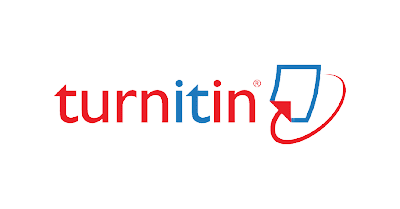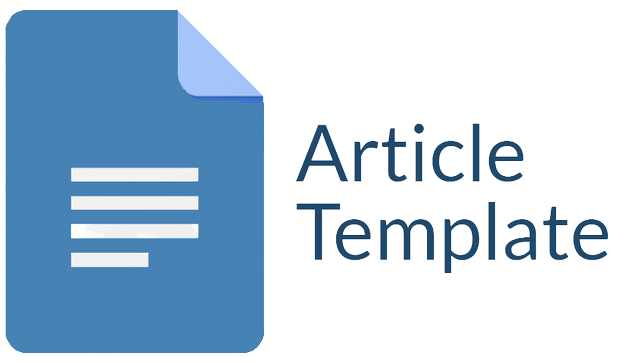THE COMPARTMENT MODEL WITH INTERVENTION FOR STUNTING PREVALENCE
Abstract
This study aims to propose a new mathematical model to reduce the prevalence of stunting with interventions given to children aged 0 months to less than 24 months. The interventions given are how often toddlers are checked for health at integrated health centers, breastfeeding, complementary feeding and immunization. This study develops a compartment model that considers the basic characteristics of stunting transmission and interventions that will be given to toddlers diagnosed with stunting. This mathematical model will include the development of difference equations and differential equations to represent the transmission of stunting prevalence in real life. This new initial mathematical model can be used by authorities as a prevention strategy to reduce the prevalence of stunting. The extension of this study will include the application of the proposed mathematical model to stunting data in Indonesia.
Downloads
References
Ashari, I. M. Al, Arditama, P., Khoirunnisa, K., & Kharis, M. (2021). Permodelan Matematika Diabetes Melitus Tipe 2 Akibat Obesitas karena Makanan dan Inaktivitas Fisik. NUCLEUS, 2(1), 23–32. https://doi.org/10.37010/nuc.v2i1.259
De Wilde, J. A., Peters-Koning, M., & Middelkoop, B. J. C. (2020). Misclassification of stunting, underweight and wasting in children 0-5 years of South Asian and Dutch descent: Ethnic-specific v. WHO criteria. In Public Health Nutrition (Vol. 23, Issue 12, pp. 2078–2087). Cambridge University Press. https://doi.org/10.1017/S1368980019004464
Asmaidi, & Suryanto, E. D. (2017). Mathematical Modeling of Seir Type to Controlling Diabetes Mellitus Disease Using Insulin. Jurnal Inotera, 2(2).
Effendi, M., Prihandono, B., & Kusumastuti, N. (2015). Pemodelan Matematika dan Analisis Kestabilan Lokal pada Perubahan Populasi Penderita Diabetes Melitus. Buletin Ilmiah Mat. Stat. Dan Terapannya (Bimaster), 04(3), 135–142.
Eriksson, E. (1971). Compartment Models and Reservoir Theory COMPARTMENT MODELS AND RESERVOIR 4018 THEORY. In Source: Annual Review of Ecology and Systematics (Vol. 2).
Indah, A. P., & Maulana, Di. A. (2022). Model Dinamika Kecanduan Media Sosial : Studi Kasus Kecanduan TIKTOK pada Mahasiswa FMIPA UNESA. Jurnal Ilmiah Matematika, 10(01), 131–139.
Izzati, N., & Kaaffah, S. (2020). Peran Tabayyun sebagai Cerminan Sikap Kaum Mukminin dalam Model Matematika Penyebaran Rumor Melalui Jejaring Sosial Daring. Jurnal Al-I’jaz, 2(2), 77–98. http://zekr.org
Kaya, K., & Ekawati, D. (2021). Model Matematika pada Penyakit Diabetes Melitus dengan Faktor Genetik dan Faktor Sosial. JOMTA Journal of Mathematics: Theory and Applications, 3(1).
Kementerian Kesehatan RI. (2023). BUKU SAKU Hasil Survei Status Gizi Indonesia (SSGI) 2022.
Li, T., & Guo, Y. (2019). Stability and optimal control in a mathematical model of online game addiction. Filomat, 33(17), 5691–5711. https://doi.org/10.2298/FIL1917691L
Rusliani, N., Hidayani, W. R., & Sulistyoningsih, H. (2022). Literature Review: Faktor-Faktor yang Berhubungan dengan Kejadian Stunting pada Balita. Buletin Ilmu Kebidanan Dan Keperawatan, 1(01), 32–40. https://doi.org/10.56741/bikk.v1i01.39
Suek, J. B. W., Arbani, I. R., & Gayo, A. P. A. (2024). Tinjauan Implementasi Teori Perencanaan dalam Penyusunan Dokumen Strategi Sanitasi Kabupaten Bener Meriah. EDUSAINTEK: Jurnal Pendidikan, Sains Dan Teknologi, 11(3), 1087–1101. https://doi.org/10.47668/edusaintek.v11i3.1156
Yong, B., & Samat, N. A. (2018). The SIR political fanaticism figure voters model for estimating number of votes in Indonesian presidential elections. Model Assisted Statistics and Applications, 13(3), 279–286. https://doi.org/10.3233/MAS-180434
Copyright (c) 2024 Yulia Retno Sari

This work is licensed under a Creative Commons Attribution-ShareAlike 4.0 International License.
Jurnal allows anyone to compose, correct, and do derivative works, even for commercial purposes, as long as they credit for the original work. This license is the freest. It is recommended for maximum distribution and use of licensed material.
The submitted paper is assumed not to contain any proprietary materials that are not protected by patent rights or patent applications; The responsibility for technical content and protection of proprietary materials rests with the authors and their organizations and not the responsibility of journal or its editorial staff. The primary (first/appropriate) author is responsible for ensuring that the article has been viewed and approved by all other authors. The author's responsibility is to obtain all necessary copyright waivers to use any copyrighted material in the manuscript before submission.
Jurnal Pendidikan, Sains dan Teknologi allows the author(s) to hold the copyright without restrictions and allow the author(s) to retain publishing rights without restrictions. Jurnal Pendidikan, Sains dan Teknologi CC-BY-SA or an equivalent license as the optimal license for the publication, distribution, use, and reuse of scholarly work. Jurnal Pendidikan, Sains dan Teknologi allows the author(s) to hold the copyright without restrictions and allow the author(s) to retain publishing rights without restrictions. Jurnal Pendidikan, Sains dan Teknologi CC-BY-SA or an equivalent license as the optimal license for the publication, distribution, use, and reuse of scholarly work.
In developing strategy and setting priorities Jurnal Pendidikan, Sains dan Teknologi recognize that free access is better than priced access, libre access is better than free access, and libre under CC-BY-SA or the equivalent is better than libre under more restrictive open licenses. We should achieve what we can when we can. We should not delay achieving free in order to achieve libre, and we should not stop with free when we can achieve libre.
Jurnal Pendidikan, Sains dan Teknologi is licensed under a Creative Commons Attribution-ShareAlike 4.0 International License.
You are free to:
- Share a copy and redistribute the material in any medium or format
- Adapt a remix, transform, and build upon the material for any purpose, even commercially.
- The licensor cannot revoke these freedoms as long as you follow the license terms.






